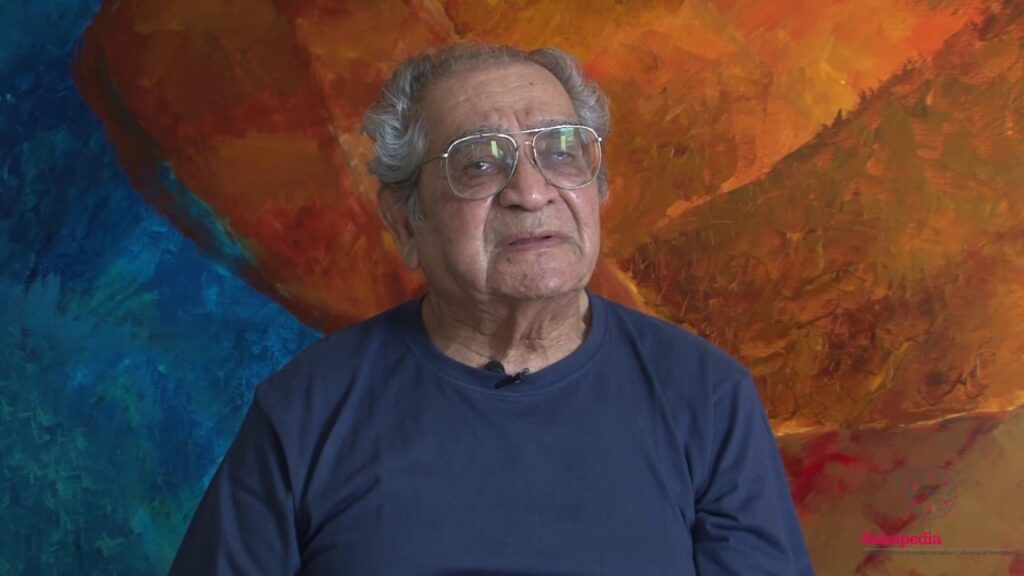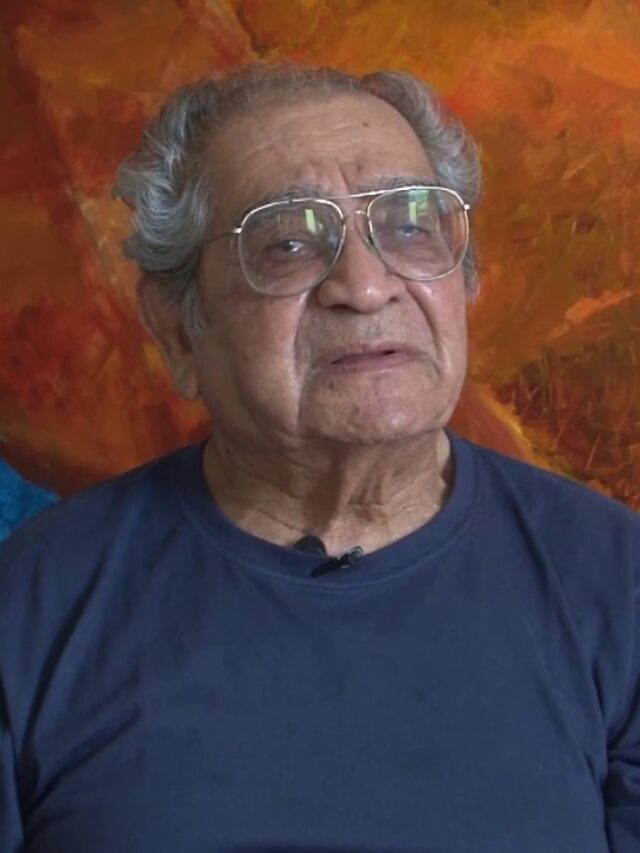Grey is without prejudice; it does not discriminate between object and space.
Akbar Padamsee, a pioneer in modern Indian painting was born on 12th April 1928. Recipient of many prestigious awards, including a gold medal from the Lalit Kala Academy, and the Kalidas Samman from the Madhya Pradesh government in 1997 for Plastic Arts, he was also the recipient of Padma Bhushan in the year 2010. He has various solo shows in Mumbai, Paris, New York and Palo Alto to his credit. His works were also exhibited at various exhibitions in Mumbai, Delhi, and abroad. He passed away on 6th January 2020 leaving behind the paintings which are listed as the most valued paintings by modern Indian artists.
Akbar Padamsee Artist Life and Career
Born in the Kutch region of Gujarat, his ancestors were court poets of their time. He went on to join Sir J. J. School of Art in Mumbai for his diploma in painting and during his tenure at the art school he joined the Progressive Artists Group (PAG) formed by F. N. Souza, S.H. Raza and M.F. Hussain which was considered to be one of the most influential groups of modern artists to emerge in early post-independent India.

In 1969-71 Akbar Padamsee set up the inter-art Vision Exchange Workshop (VIEW) with the Jawaharlal Nehru Fellowship funds where artists and filmmakers were allowed to experiment freely across various disciplines and practices. He made two short abstract films – Syzygy and Events in a Cloud Chamber.
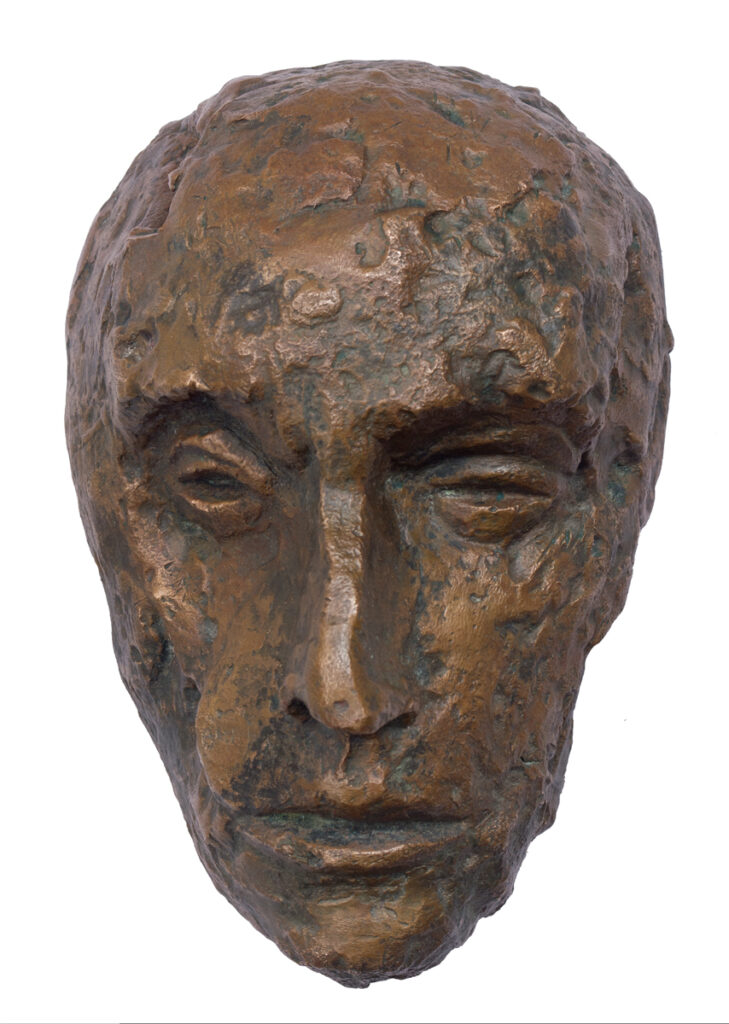
Akbar Padamsee Artwork Style
Akbar Padamsee paintings of earlier periods in a variety of painting, drawing, and etching media show a quasi-spiritual method of creation. His drawings have a sense of tranquillity, while his oils have a deep, bold intensity and luminescence. Rather than being interested in portraying the subject beyond the study of lines, modernist and experimentalist artist Akbar Padamsee used his subjects as informants of form. Ink black, sepia, and grisaille tones are used in his monochromatic portraits and nudities to depict imagined people. Some of Akbar Padamsee artworks showcase the slant and effective use of space on paper. Sublime elements aim to combine the aesthetics of post-war modernism with Chinese landscape influences in the application of tempera and ink on paper.

Akbar Padamsee Famous Paintings
Be it oil painting, watercolour, sculpture, computer graphics, photography or filmmaking, he was the master of all. After working with the rich colour palettes in his early years, artist Akbar Padamsee paintings between 1959- 1960 were mostly done in grey. Let us discuss some of them briefly.
Metascape Akbar Padamsee
Akbar Padamsee Metascape series were engendered in the 1970s. His long-term interest in landscape painting led him to interrogate the mythic and archetypal nature of the genre. One would see him utilizing timeless elements such as the sun, moon, and earth. They are a magnificent rendering of a fictitious place that begs for solitary reflection. A still, motionless space is given movement by the striking red and earthy brown hues used in the bold colour scheme. The surreal scenery carries the observer to a place where one can lose oneself, find it again, and find freedom.

A crucial component of Akbar Padamsee Metascapes is the harmony between the representational and the abstract. Even though there are always recognizable elements of nature in the compositions, there is also a hint of abstraction. The picture plane is divided into discrete areas and forms that define the earth and mountains. These forms frequently include water, the sky, and even the shapes of trees. In Akbar Padamsee paintings, every element transcends its fleeting physical role to fulfil a larger, theoretical purpose, giving the pieces a sense of perpetuity that almost elevates the viewing experience to a spiritual one.
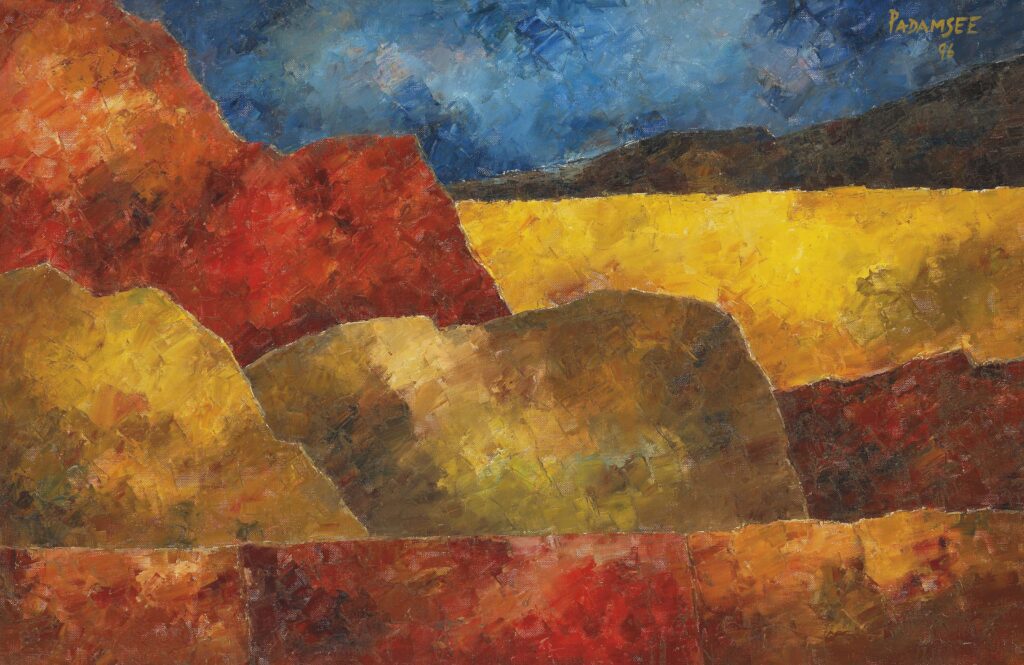
Prophet Akbar Padamsee
Akbar Padamsee was influenced by African masks and other tribal art as well as European Modern masters, which led to the creation of his well-known ‘Prophets’ series. One may see the image of an excavated sculpted head from Mohenjodaro in these Akbar Padamsee paintings. In the painting, the bearded man in the ornamental robe signifies a Semitic prophet. SH Raza proposed the series’ title. The Prophets are interpreted by the majority of critics as suffering masses. The distinguishing features of his ‘Prophet’ series are the shaded eye sockets, the linear nose, the precisely shaped beard and defined neck sinews, and the flowing vine-like patterns.
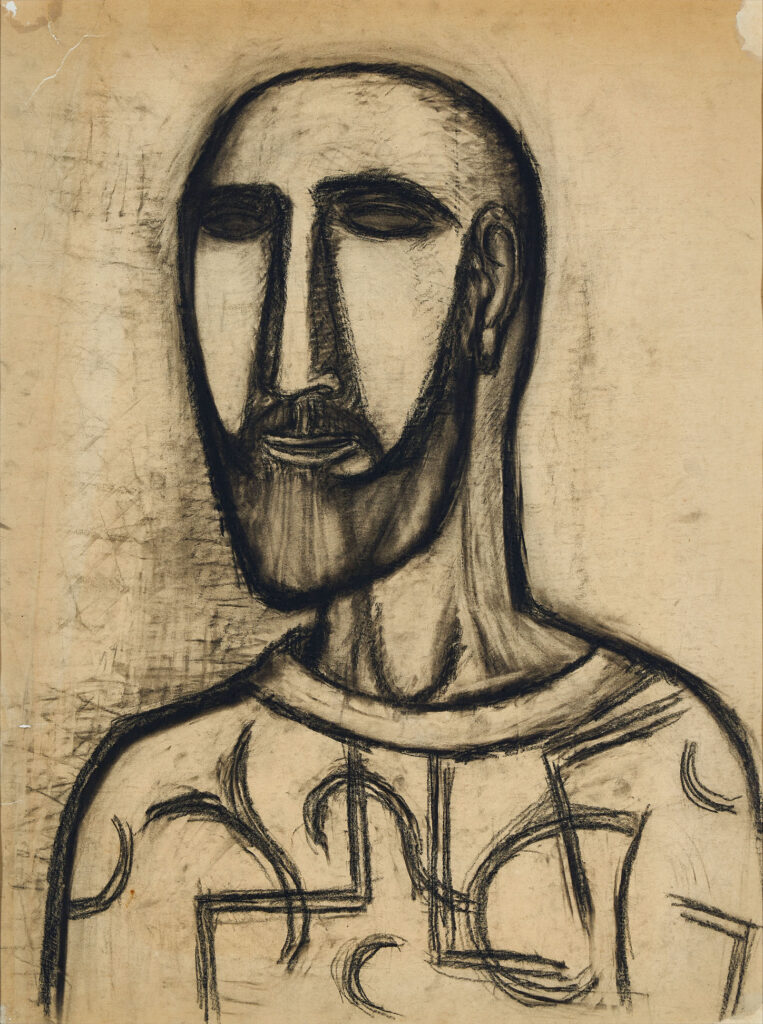
Image Courtesy – Sahapedia via YouTube

